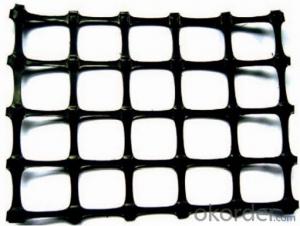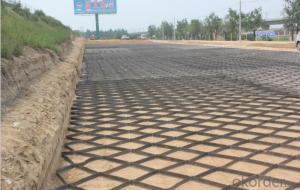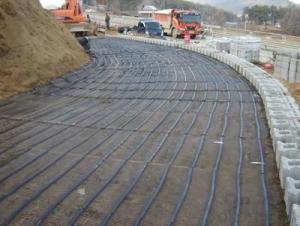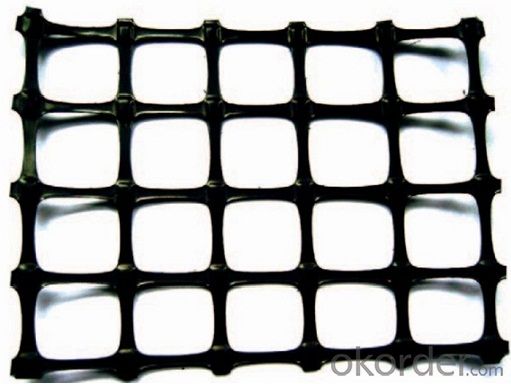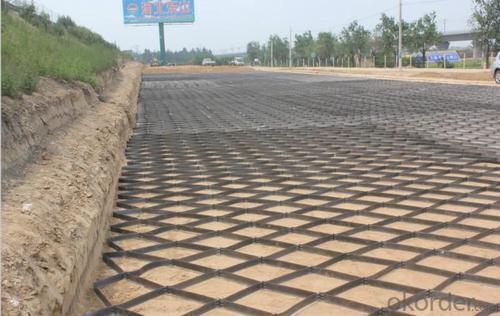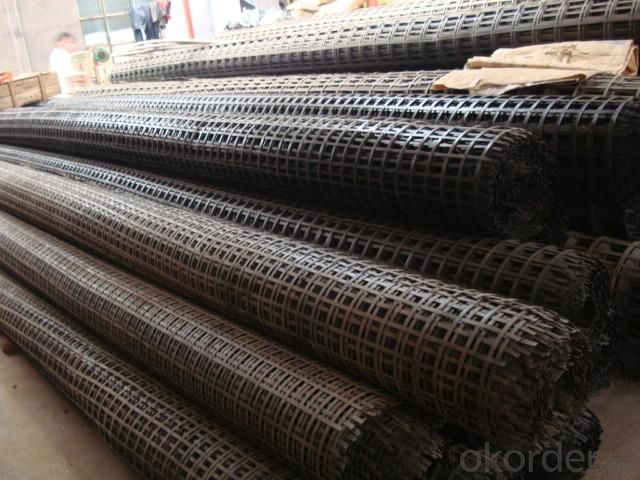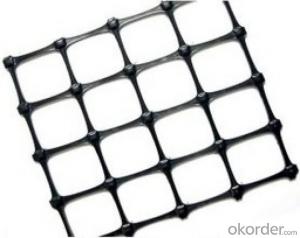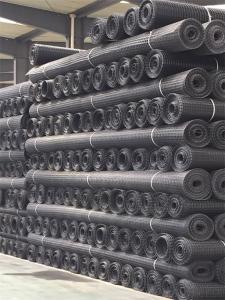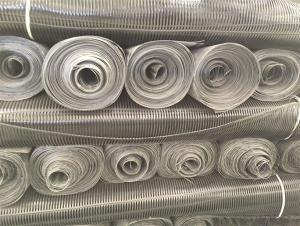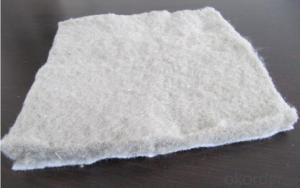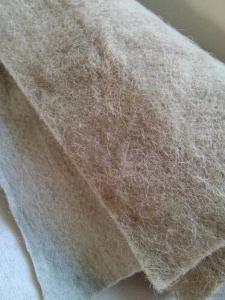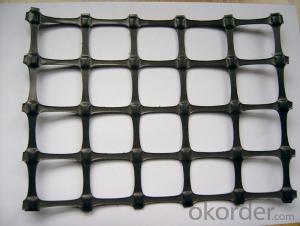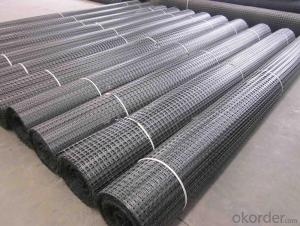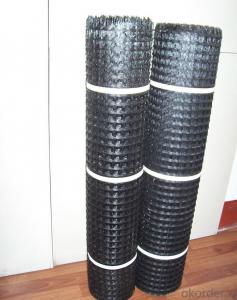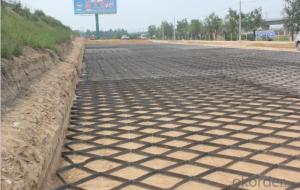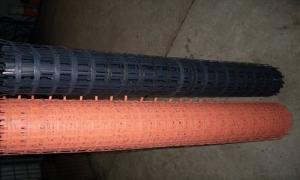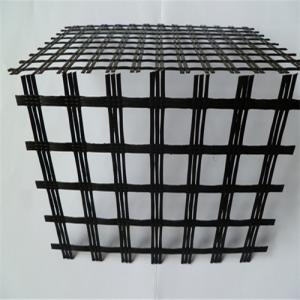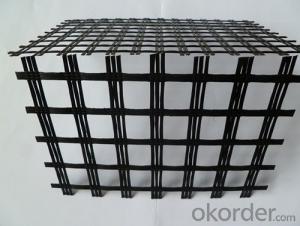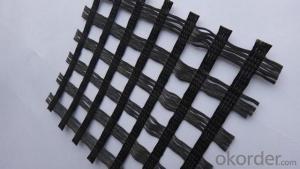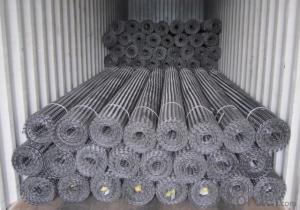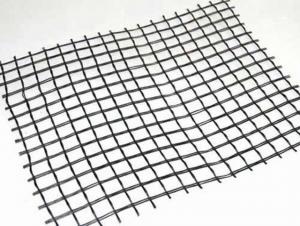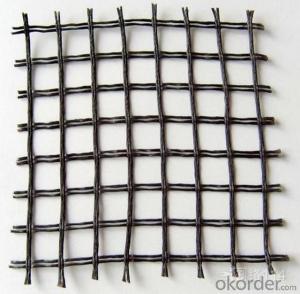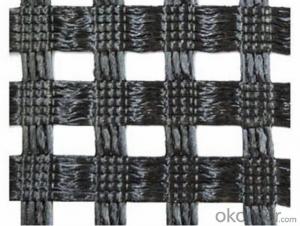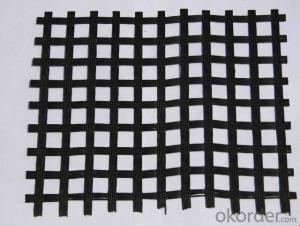Flexible Geogrids for Soil Reinforcement in Road Construction
- Loading Port:
- Shanghai
- Payment Terms:
- TT OR LC
- Min Order Qty:
- 85800 m²
- Supply Capability:
- 1000000 m²/month
OKorder Service Pledge
OKorder Financial Service
You Might Also Like
The Description of Soil Reinforcement Geogrid
Soil Reinforcement Geogrid is a kind of new favorable earthwork base material to strengthen the road surface and roadbed. This product is made by weaving and covering fiberglass filament. It is featured by high vertical and horizontal tensile strength, low unit extension, high flexibility, and favorable high and low temperature resistance. The products after surface covering own the favorable property of alkali resistance and aging resistance.
The details of Soil Reinforcement Geogrid
| Type: | Geogrid | Material: | Fiberglass Geogrid | Place of Origin: | China (Mainland) |
| Certificates: | CE,ISO | Color : | White & Black | Width : | 1m--6m |
| Length | 50-200m | Mesh Size: | 10-40mm | Tensile Strength | 30KN-300KN |
| Area Weight | 130-900g/sm | Package | PP bags or PE film | Approximate mesh size | 12.7*12.7 25*25 40*40 |
Packaging & Delivery
| Packaging Details | PP bags or PE film. Or Packed as customers' requests; |
| Delivery Detail | 10-20days after see the payment. |
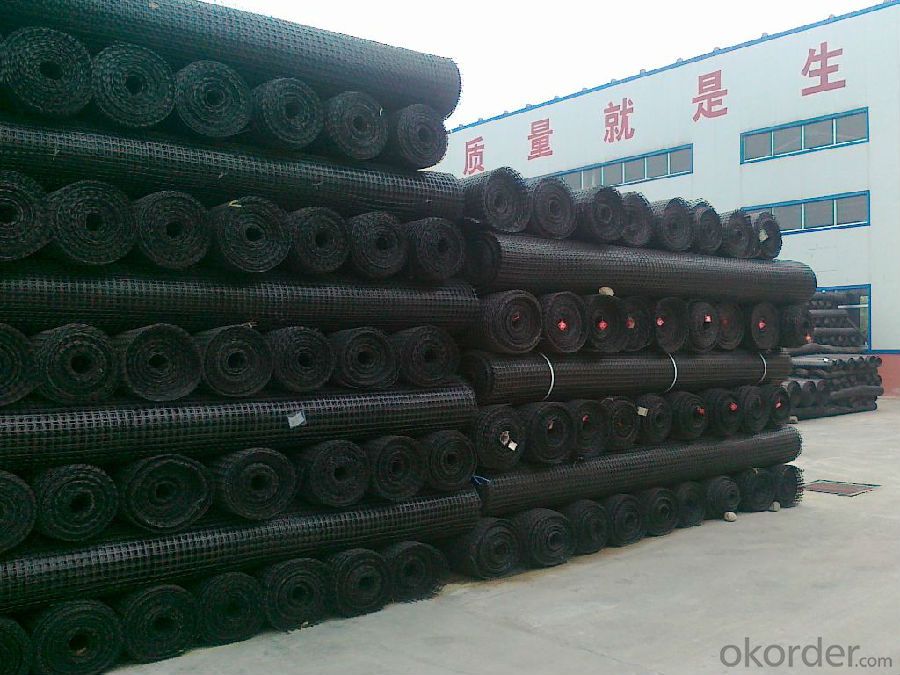

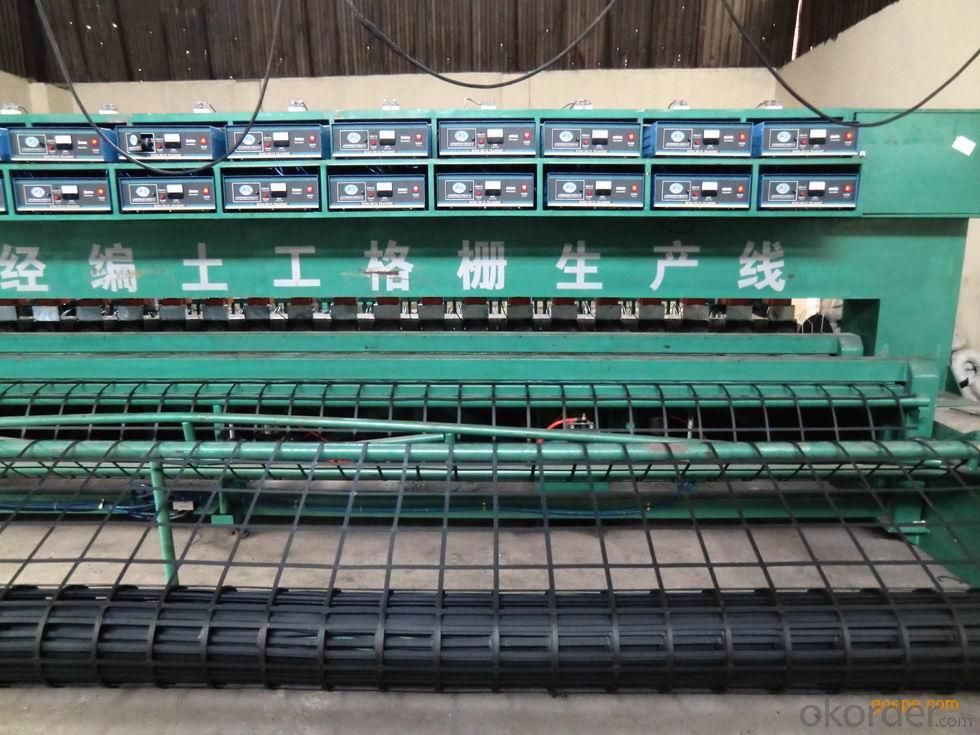
Remarks: we are very large fortune 500 enterprise with more than 20branches in worldwide, and have almost ten years export experience in geosynthetic field. We have kunlun bank account and have many Iran geosynthetics customers.So if any question or support, please just feel free to contact me at any time.
- Q: How do geogrids help in reducing construction labor requirements?
- Geogrids help in reducing construction labor requirements by providing reinforcement and stability to the soil, which eliminates the need for excessive excavation, backfilling, and compaction. This saves time and effort for the construction workers, as geogrids can bear heavy loads and prevent soil movement, reducing the need for extensive manual labor.
- Q: What are the differences between geogrids and geocells in terms of installation?
- Geogrids and geocells differ in terms of installation primarily in the way they are placed and secured. Geogrids are generally unrolled and laid on the soil surface, then anchored with stakes or other means to prevent movement. On the other hand, geocells are typically assembled on-site, forming a three-dimensional honeycomb structure that is filled with soil or aggregate material. This assembly process requires connecting the individual cells together and often involves the use of clips or connectors. Overall, geocells require more labor and time for installation compared to geogrids.
- Q: What are the differences between three different types of geogrids?Unidirectional geogrid, two-way geogrid plastic, geogrid, warp knitted geogrid and fiberglass geogridWhich is the best place in Guangzhou geogrid Zhejiang geogrid in Tianjin?
- Geogrid, two-way geogrid, all kinds of geogrid performance and the use of different positions
- Q: Can geogrids be used in retaining walls for waterfront applications?
- Yes, geogrids can be used in retaining walls for waterfront applications. Geogrids are commonly used in retaining walls to provide stability and reinforcement. In waterfront applications, where there is a higher risk of erosion and soil movement, geogrids can help prevent the retaining wall from shifting or collapsing. They can also enhance the overall durability and strength of the wall, making it suitable for waterfront environments.
- Q: How to calculate the amount of geogrid works under what circumstances need to lay geogrid
- Of course, mainly depends on what kind of material you are using geogrid, I said above is fiberglass geogrid.
- Q: Details of fiberglass geogrid
- 1, slow down reflection crackThe reflection crack is due to the old concrete surface layer in the vicinity of the joint or crack of large displacement caused by asphalt overlay in above the stress concentration caused by it, including horizontal displacement caused by changes in temperature and humidity, and caused by the traffic load of the vertical shear displacement. The former leads to the concentrated tensile stress in the asphalt overlay above the joint or crack, while the latter makes the asphalt overlay above the joint undergo large bending stress and shear stress.Because the modulus of geogrid is very large, up to 67Gpa, as the application of hard interlayer stiffness in asphalt overlay layer, its role is to inhibit stress, strain release, and at the same time as the asphalt concrete reinforced material, improve overlay tensile and shear capacity, so as to achieve the purpose of crack reduction. Practice shows that a change in the direction of the horizontal crack corresponding energy can be moved from its starting point 0.6 meters, more than 1.5 meters width of the reinforcement material helps to ensure that the energy dissipated on both sides of the crack completely.
- Q: What are the maintenance requirements for geogrid-reinforced structures?
- The maintenance requirements for geogrid-reinforced structures typically involve regular inspections to check for any signs of damage or degradation. This includes assessing the condition of the geogrid, ensuring proper connection between the geogrid and the surrounding materials, and monitoring any settlement or movement of the structure. Additionally, vegetation management is important to prevent root intrusion which can compromise the integrity of the geogrid. Regular cleaning and clearing of debris is also necessary to maintain the functionality and lifespan of geogrid-reinforced structures.
- Q: Can geogrids be used in reinforcement of underground tunnels and caverns?
- Yes, geogrids can be used in the reinforcement of underground tunnels and caverns. Geogrids are high-strength materials that can provide stability and support to the surrounding soil or rock mass in underground structures. They can be used to reinforce the tunnel walls, prevent ground movement, and increase the overall strength of the tunnel structure. Geogrids are commonly used in geotechnical engineering projects to enhance the stability and longevity of underground tunnels and caverns.
- Q: High density polyethylene one-way geogrid, tensile yield of 20kn/m
- This refers to a material specification for the product,
- Q: How to determine geogrid reinforcement or crack resistance
- Asphalt pavement cracking is one of the most common diseases in asphalt pavement in the world. No matter in the frozen area or in the non frozen area, the crack severity is different. The causes of asphalt pavement cracking and cracks in the form of a variety, but the main reason for the cracking of asphalt pavement, cracks can be divided into two categories, namely, the type of load cracks and non load cracks.The use of geotechnical materials to prevent asphalt pavement cracking effect is obvious. Selection of good resistance to erosion, dry shrinkage, temperature shrinkage coefficient is small, high tensile strength of semi-rigid material as the base, it is best to use the low temperature expansion coefficient of aggregate.High quality asphalt with good relaxation performance is used as the surface layer to ensure the penetration and ductility of asphalt. Certain additives or polymers should be used. In order to improve the low temperature crack resistance and high temperature stability of asphalt.
Send your message to us
Flexible Geogrids for Soil Reinforcement in Road Construction
- Loading Port:
- Shanghai
- Payment Terms:
- TT OR LC
- Min Order Qty:
- 85800 m²
- Supply Capability:
- 1000000 m²/month
OKorder Service Pledge
OKorder Financial Service
Similar products
Hot products
Hot Searches
Related keywords
